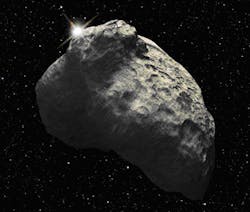Image sensors to spot objects in the Kuiper Belt
Imaging sensor maker e2v (Chelmsford, UK) has been awarded a contract by the Academia Sinica Institute of Astronomy and Astrophysics (ASIAA) in Taiwan to supply a set of 40 large-area CMOS imaging sensors for three ground-based telescopes as part of the Transneptunian Automated Occultation Survey (TAOS II).
TAOS II will measure the size distribution of small objects of less than 1km in diameter at the edge of the solar system in the Kuiper Belt, a vast ring of icy debris that is encircling the outer rim of the solar system just beyond Neptune. These very distant solar system objects are rarely studied because they are so small and faint, making it impossible to detect them directly.
TAOS II will operate three medium sized telescopes at the Observatorio Astronomico Nacional (OAN) at San Pedro Mártir (SPM) in Baja California in Mexico. Each telescope will be equipped with a custom camera capable of collecting image data on more than 10,000 stars simultaneously. The resulting data volume will be enormous, with over 300 TBytes per year of raw image data.
The 31 x 74 mm sensors will operate at 20 frames per second to detect the fraction of a second when a Kuiper belt object passes in front of a distant star and the photometric light dips. The three telescopes will each have ten 8.8M pixel e2v CMOS devices that will be custom designed, manufactured and backthinned by e2v to provide low read-noise and high spectral response.
Other recent stories covering applications of e2v imaging sensors that you might find of interest.
1. Telescope captures images of the Whirlpool galaxy
The Lowell Observatory has released the first images taken with a 4k x 4k imaging sensor from e2v (Chelmsford, UK) that equips its flagship Discovery Channel Telescope (DCT).
2. Imaging sensors launched into space
On 23rd March 2012, imaging sensors from e2v (Chelmsford, Essex, UK) were launched into space onboard the European Space Agency’s (ESA) Edoardo Amaldi spacecraft, the third Automated Transfer Vehicle (ATV) to be sent to the International Space Station (ISS).
3. Spanish observatory gets gigapixel camera
e2v (Chelmsford,UK) has signed a multimillion dollar contract to supply a complete camera system that will be installed at the Observatorio Astrofísico de Javalambre’s telescope near Teruel in Spain.
-- Dave Wilson, Senior Editor, Vision Systems Design
